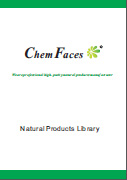| Description: |
5-Methoxyflavone shows antioxidant and suppressive activity on the production of nitric oxide (NO) from lipopolysaccharide (LPS)-induced macrophage cells. It provides gastroprotection against nonsteroidal anti-inflammatory drug-induced gastric damage. 5-Methoxyflavanone induces cell cycle arrest at the G2/M phase, apoptosis and autophagy in HCT116 human colon cancer cells. |
| Targets: |
NO | p53 | Caspase | Chk2 | ERK | Autophagy | MEK | ATM |
| In vitro: |
| Food Bioscience, 2015,11(5):1-7. | | In-vitro evaluation for antioxidant and anti-inflammatory property of flavanone derivatives.[Reference: WebLink] | The purpose of this study is to evaluate the antioxidant and suppressive activity of flavanone derivatives on the production of nitric oxide (NO) from lipopolysaccharide (LPS)-induced macrophage cells.
METHODS AND RESULTS:
Flavanone derivatives were prepared by adding one to three methoxy substituents (–OCH3) to flavanone or chloroflavanone structure. 5-Methoxyflavanones, including 5-methoxyflavanone, 5-methoxy-4′-chloroflavanone, and 5,4′-dimethoxyflavanone, had the best antioxidant activity, as compared to other flavanone derivatives. Anti-inflammatory effect of flavanone derivatives was studied by suppressive activity on NO synthesis from LPS-stimulated macrophages cells. 3′,4′-Dimethoxyflavanone, 5-methoxyflavanone, and 5-methoxy-4′-chloroflavanone showed the potent inhibitory activity on nitrite production. Addition of the methoxy group at 5′-position and 3′,4′-position of flavanone showed a high inhibitory activity of NO production from LPS-macrophage cells, which is one of the typical anti-inflammatory biomarkers.
CONCLUSIONS:
Taken together, the location of the methoxy group in a flavanone structure might have some connection with antioxidant and anti-inflammatory activities. |
|
| In vivo: |
| Digestion, 1997, 58(2):147-154. | | Flavonoid-lnduced Gastroprotection in Rats: Role of Blood Flow and Leukocyte Adherence.[Reference: WebLink] | To elucidate the mechanisms of flavonoid-induced protection against nonsteroidal anti-inflammatory drug (indomethacin)-induced acute gastric damage, the effects of 5-methoxyflavone and 5-methoxyflavanone on the gastric vasculature were compared both in vivo (using laser Doppler flowmetry in anesthetized rats) and in vitro on rat superior mesenteric arteries.
METHODS AND RESULTS:
The effects of the compounds on indomethacin-induced leukocyte adherence to mesenteric venules were investigated by intravital videomicroscopy. Oral 5-methoxyflavone reduced indomethacin-induced macroscopic damage by 38 to 99% (ED50 = 5.5 mg/kg). Damage was not significantly reduced by 5-methoxyflavanone. Light microscopy studies also demonstrated a reduction in damage severity. 5-Methoxyflavone, but not 5-methoxyflavanone, increased the gastric conductance significantly. The effects on isolated mesenteric arteries correlated with the effects on in vivo conductance. Finally, indomethacin-induced leukocyte adherence was inhibited to a greater extent by 5-methoxyflavone than by 5-methoxyflavanone.
CONCLUSIONS:
In conclusion, the flavonoid 5-methoxyflavone provides gastroprotection against nonsteroidal anti-inflammatory drug-induced gastric damage. A structurally similar compound, 5-methoxyflavanone, demonstrated minimal gastroprotective activity, suggesting that the double bond of 5-methoxyflavone is required for biological activity. The finding that 5-methoxyflavone (but not 5-methoxyflavanone) significantly increased gastric vascular perfusion and reduced leukocyte adherence to mesenteric venules suggests that these mechanisms may contribute to the flavonoid's gastroprotective activity. |
|
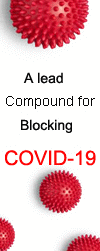
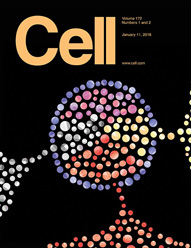 Cell. 2018 Jan 11;172(1-2):249-261.e12. doi: 10.1016/j.cell.2017.12.019.IF=36.216(2019)
Cell. 2018 Jan 11;172(1-2):249-261.e12. doi: 10.1016/j.cell.2017.12.019.IF=36.216(2019)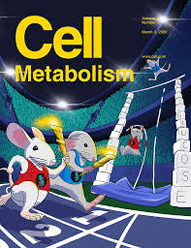 Cell Metab. 2020 Mar 3;31(3):534-548.e5. doi: 10.1016/j.cmet.2020.01.002.IF=22.415(2019)
Cell Metab. 2020 Mar 3;31(3):534-548.e5. doi: 10.1016/j.cmet.2020.01.002.IF=22.415(2019)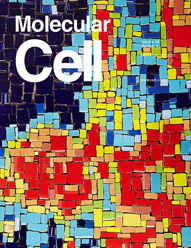 Mol Cell. 2017 Nov 16;68(4):673-685.e6. doi: 10.1016/j.molcel.2017.10.022.IF=14.548(2019)
Mol Cell. 2017 Nov 16;68(4):673-685.e6. doi: 10.1016/j.molcel.2017.10.022.IF=14.548(2019)